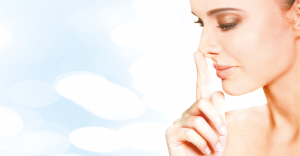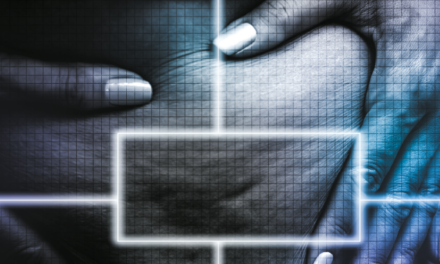
Argentina
email: [email protected]
Mercedes Brown, MD explains how to use the ‘Foxy Eyes’ technique to transform the periorbital region with barbed polydioxanone threads
FOXY EYES IS THE LATEST TECHNIQUE WITH WHICH ALMOND EYES are achieved using threads and is currently very popular with millennials. Much to everyone’s surprise, this treatment is also requested by older women as it improves the appearance of the eyes bringing back youth and a fresher look while achieving more tension and generating more collagen. The technique also enlarges the visual range, which can be reduced due to upper lid deflation. In this article, I will take a look at where the displacement area should be, anatomic worries, the material used, eventual side-effects, echographic follow-up, and results.
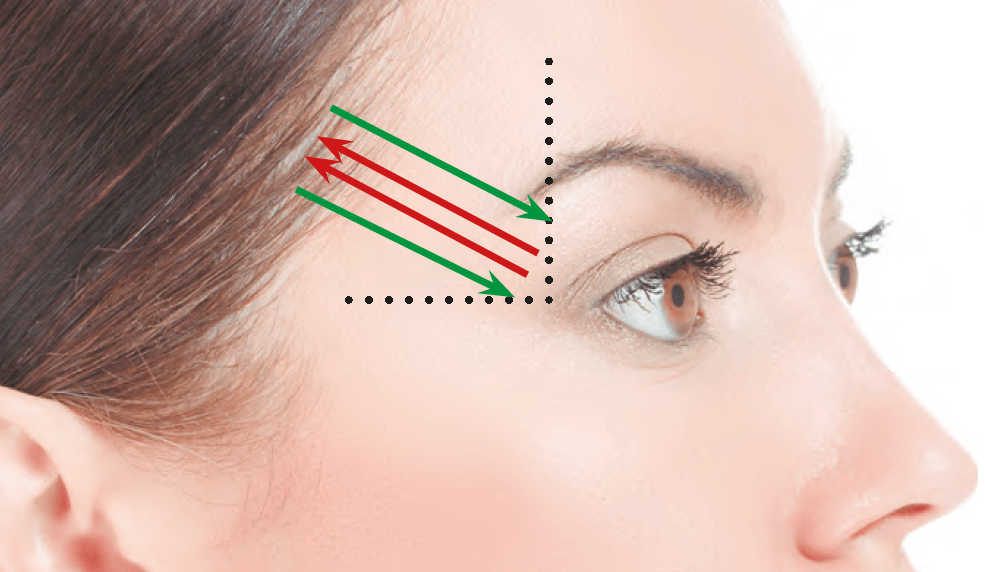
The use of polydioxanone threads in practice has grown a great deal over the years. It is an excellent option for repositioning and biostimulation, preserving dimensions without increasing volume. Polydioxanone remains the best option compared to other types of stitches, such as polycaprolactone (PCL), due to its strength and the advantage given by the ether group in its chemical production that allows it to be more flexible compared to other types of threads. The ‘great power’ of these threads is their ability to produce collagen and is the main reason we chose them for this treatment. To achieve our objective, we chose barbed (also known as traction spiculated) threads. With respect to the formation of the barbs, we prefer that they are generated by moulding and not cutting. Several test studies showed that these types of barbs were more resistant, with a lower percentage of rupture and better attachment1. We used polydioxanone threads that comes assembled in a cannula for their accuracy to target the surface, inflicting less pain and reducing the chance and significance of hematomas to a level more acceptable to the patients.
The Foxy Eyes technique is an updated version of a previously well-known and used technique that involved lifting the tail end of the brow, enabling the upper lid’s visual range to improve. Therefore, this type of treatment is not only a trend for the younger generation and has in fact been around for many years. To achieve the desired result, we use 5 mm polydioxanone threads assembled in a 21 G cannula. The treatment protocol that we have designed takes four threads on each side, inserting them all in the same session. The threads are introduced with a technique that not only repositions the temporal area but also adjusts and lifts it, maintaining tension in the area. When describing the protocol, we can infer the following: approaching the temporal area has always been a field for experts due to the different skin layers and complexity, yet acknowledging its anatomy and the dissection layers, the access is not only safe but simple. Should we perform the dissection in layers, we could distinguish between the following levels:
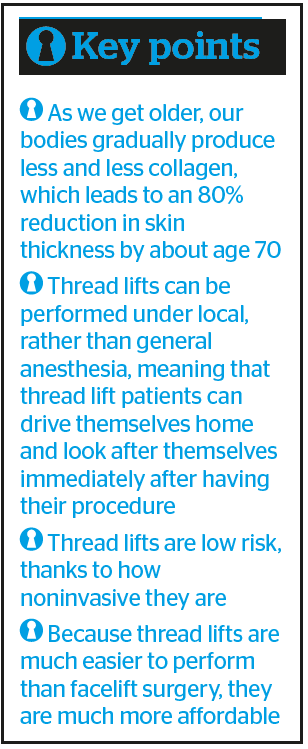
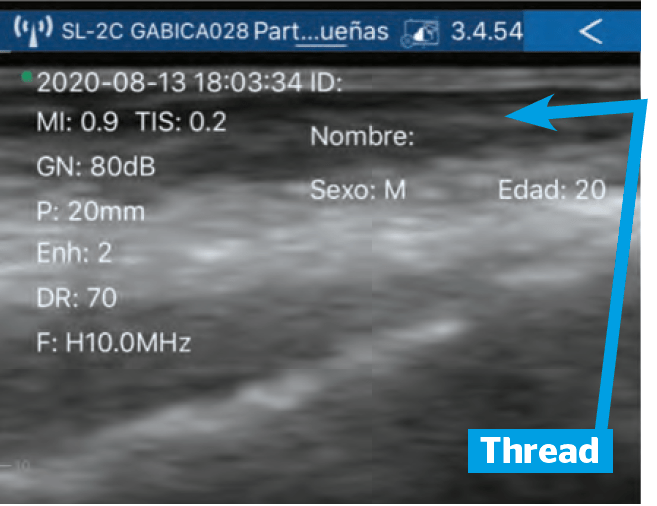
- Dermis
- Subcutaneous
- Superficial temporal fascia.
- Interfascial layer
- Superficial layer of deep temporal fascia
- Fat pad
- Deep temporal fascia
- Buccal fat pad
- Temporal muscle
- Periosteum.
The Foxy Eyes technique
With young patients, skin layers and thickness are well maintained; however, with ageing, changes begin to occur for a number of reasons, such as bone resorption, loss of muscle tone, ligament laxities, volume loss of adipose pads. Additionally, the temporal area is often one of the first areas to thin and droop. We use the outside edge of the eye as a border, and we draw a line towards the scalp, with another line perpendicular 90 degrees toward the frontal zone. We work within that area. Two of the PDO threads enter obliquely from the hairline, which is at the level of the scalp, leaving a space between both threads where the remaining two threads will be introduced. The ‘foxy eyes’ will be introduced when the remaining two threads are inserted from the orbital rim (periosteum), inserting the whole of the cannula and securing the thread under the scalp in the lifting area to ensure traction and tension of the temporal area. For this procedure, we introduced a small dose of anaesthesia. In this case, we use 2% lidocaine with epinephrine, covering the access zones. We have chosen polydioxanone barbed threads for their strength and calibre for this area.
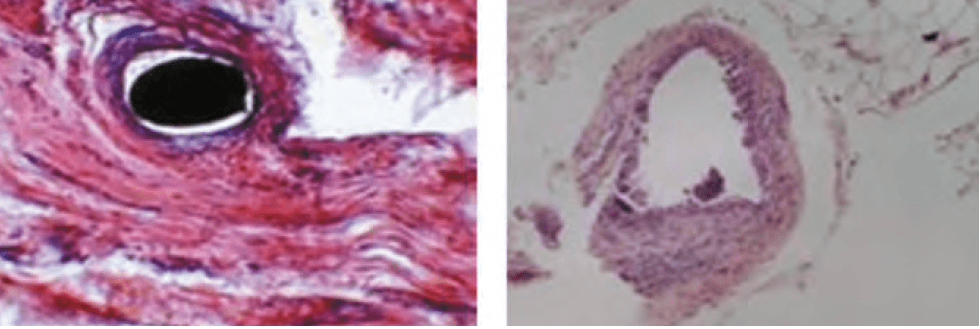
Results
Once the procedure is over, we check the area with an echographic follow-up of the threads 15 days later, when we will be able to observe the thread in the correct position and see it is performing optimally. After one month, the degradation of the polydioxanone begins, turning it into water and carbon dioxide. The correct placement of the thread should be three quarters in the superficial temporal fascia and interfascial, as this is a safe zone of approach and fixation. Moreover, due to the use of a cannula, bearing in mind that in the temporal area the skin is very thin, if the thread does not remain in the correct position, we will come across side-effects, such as the thread being visible, lack of traction, and persistent pain in the area.
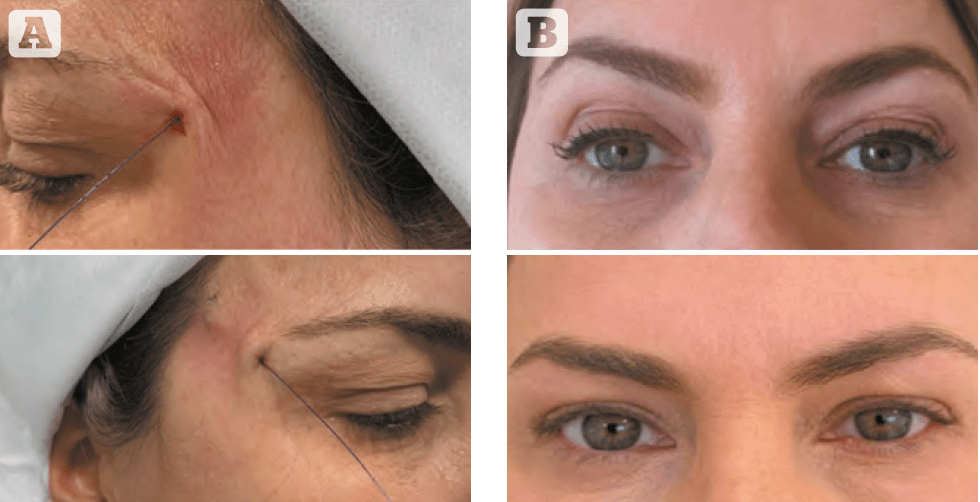
The echographic results show the thread up to 8 weeks after the procedure, from which time we should begin observing collagen vectors. These collagen vectors are the protagonists and our final objective since these vectors guarantee a 12 to 18-month result duration. The prescriptions given to the patients after having performed the procedure are few but specific. We use kinesiology taping following the vectorisation of the threads. The patient leaves the office with the taping, which should remain in place for 24 hours after the procedure. This type of tape is used in kinesiology to treat ankle sprains, strains and swellings. We include this tape in the treatment to prevent and eventually treat hematomas, swollen areas, and pain. The results from polydioxanone threads will last between 12 to 18 months, with best results from 1 month after the procedure and until 14 months later, after which the downward curve begins. This treatment could be combined with botulinum toxin injections, dermal fillers, or platelet-rich plasma to improve results further. The overlap of treatments should be avoided as it could raise the temperature of the dermis. Due to the fact that the threads are thermolabile, this combination could make polydioxanone disintegrate more rapidly.
Reference
- Tejero P. Hilos de sustentación facial: revisión de. técnicas y materiales. SOARME 2016; 4(9): 13




